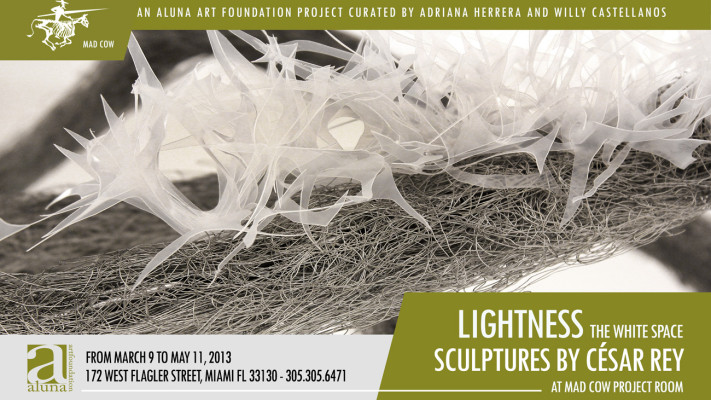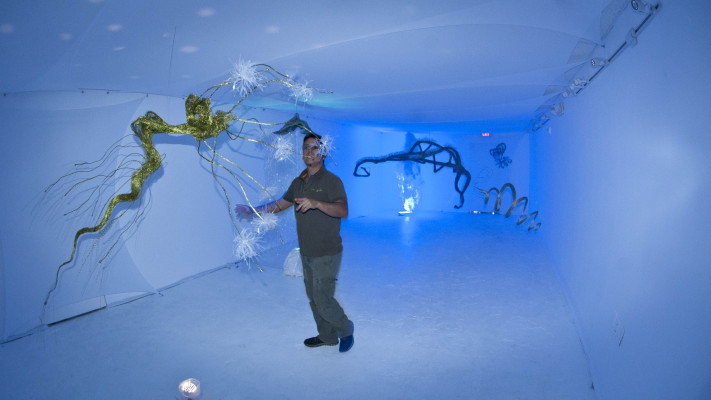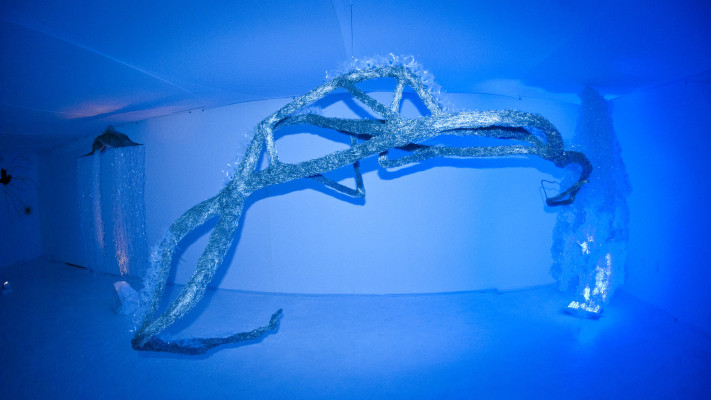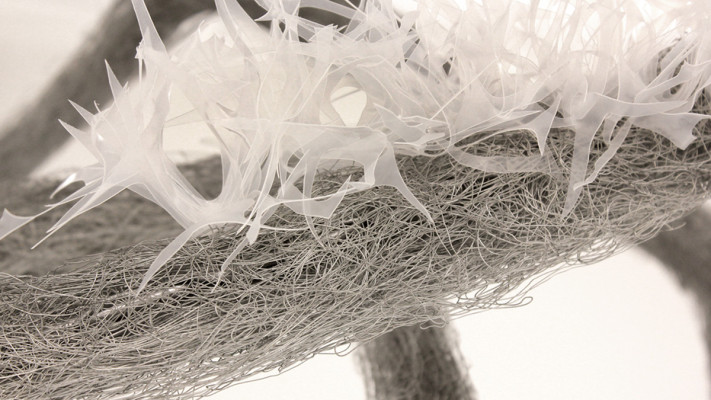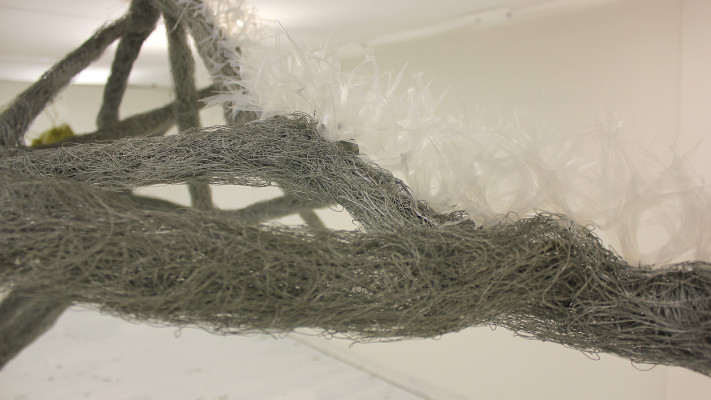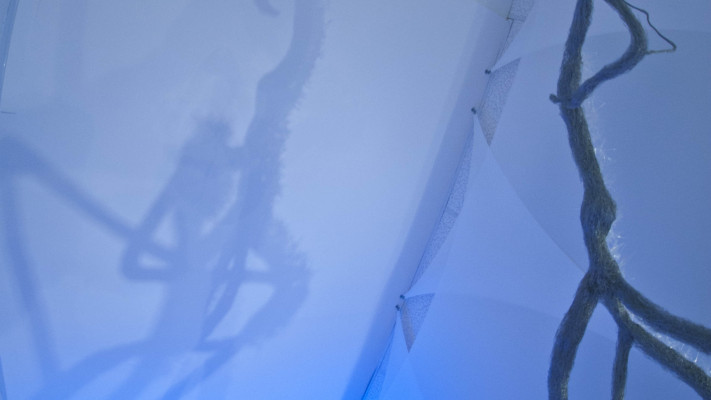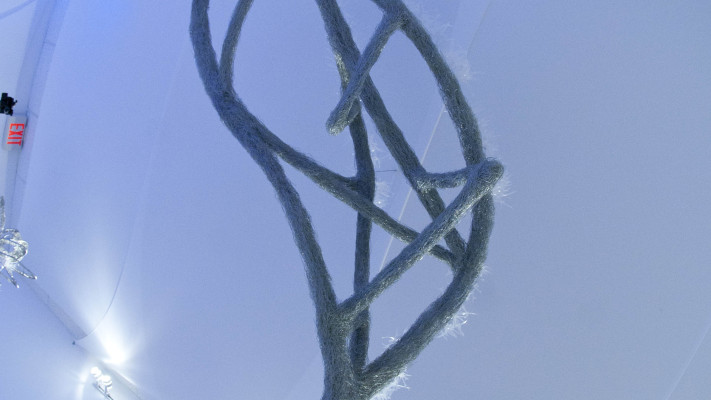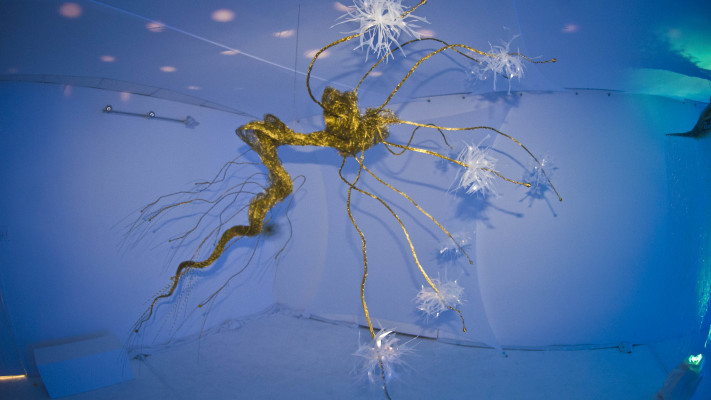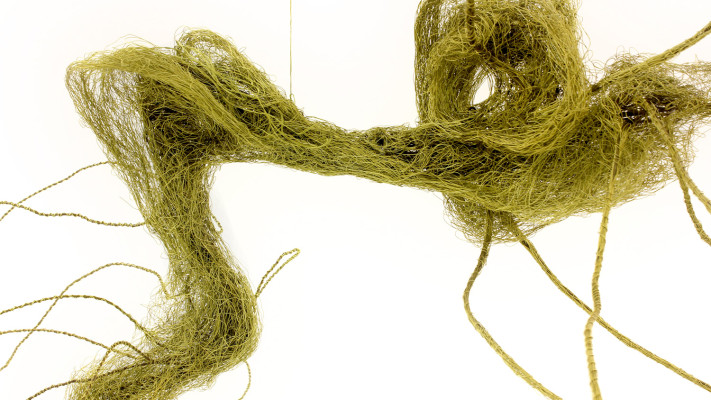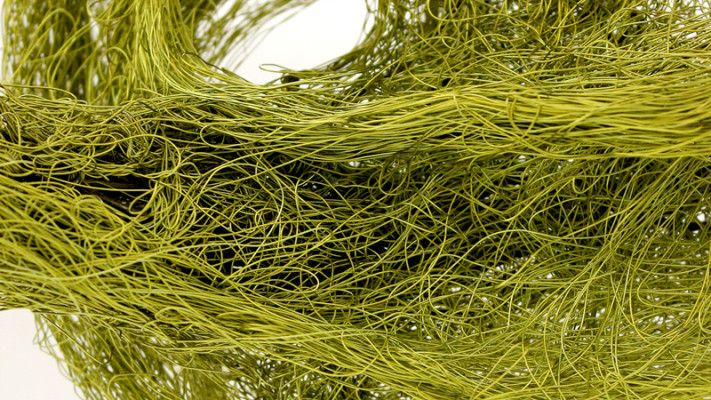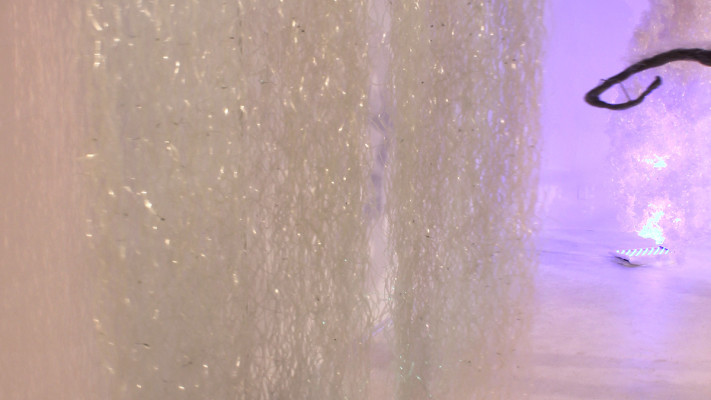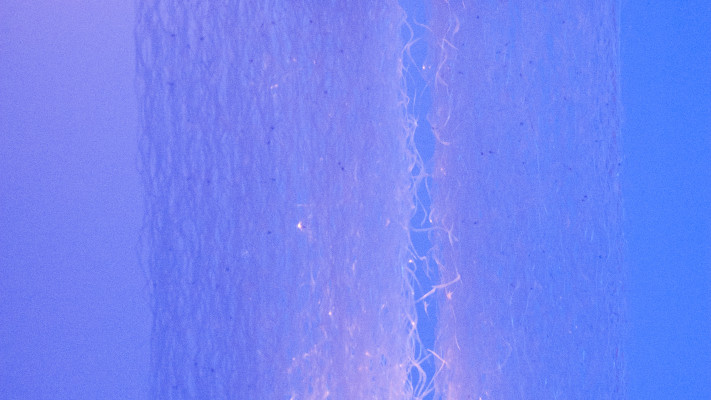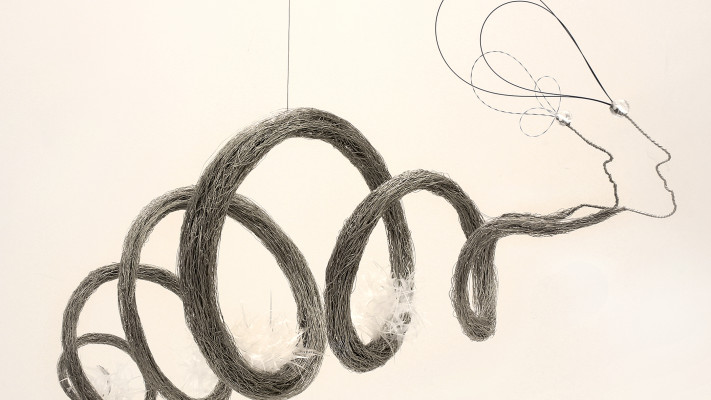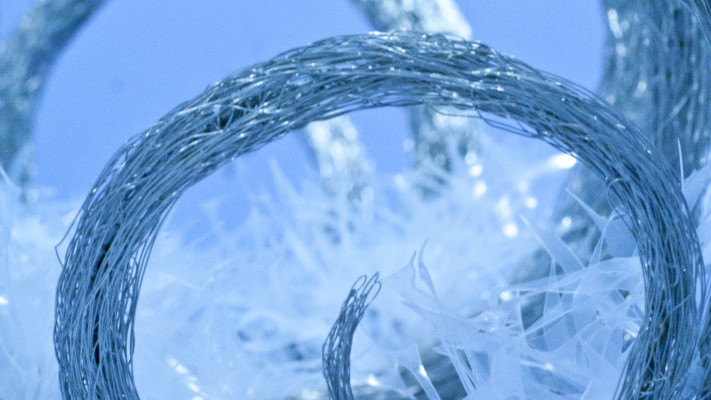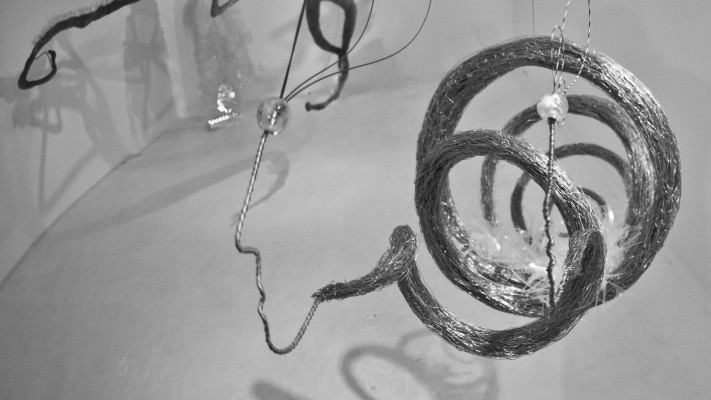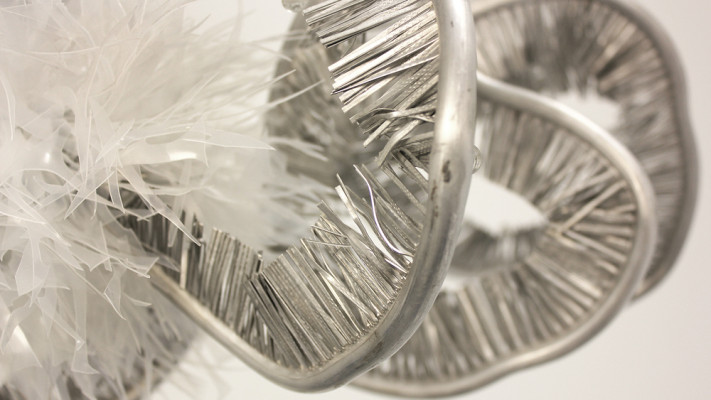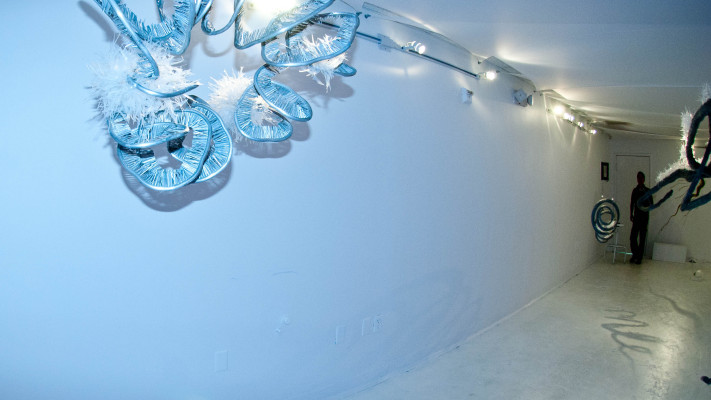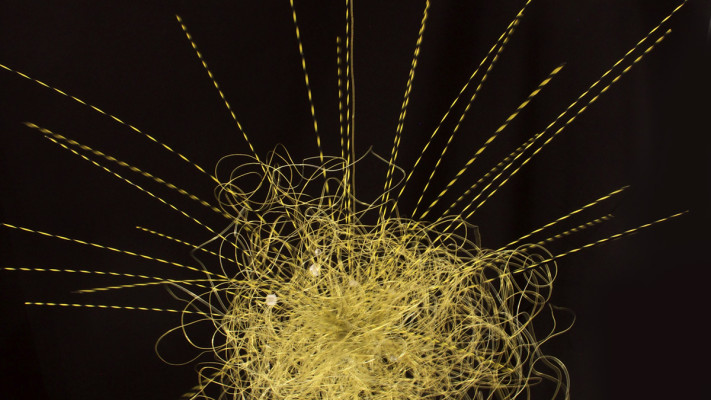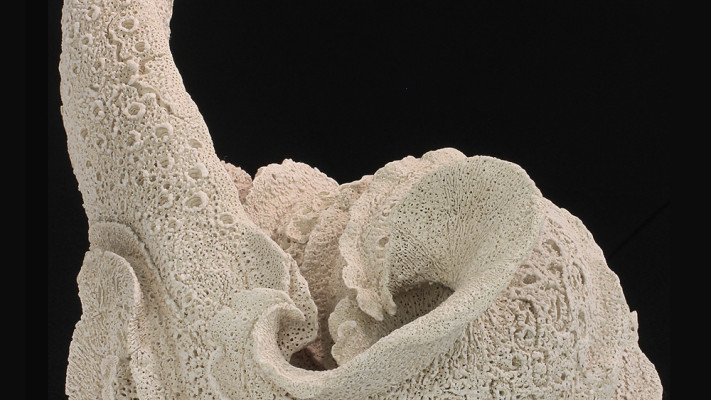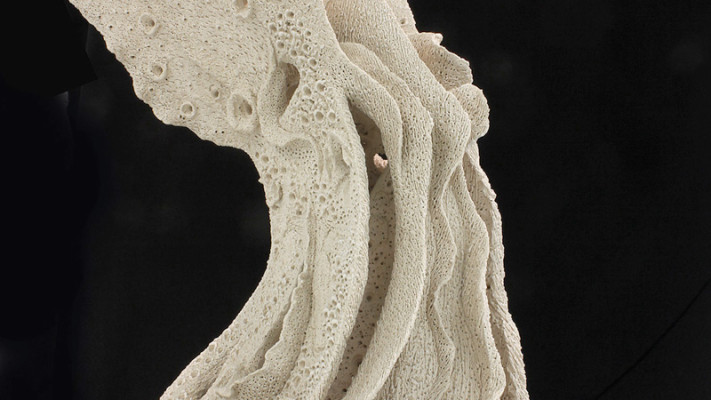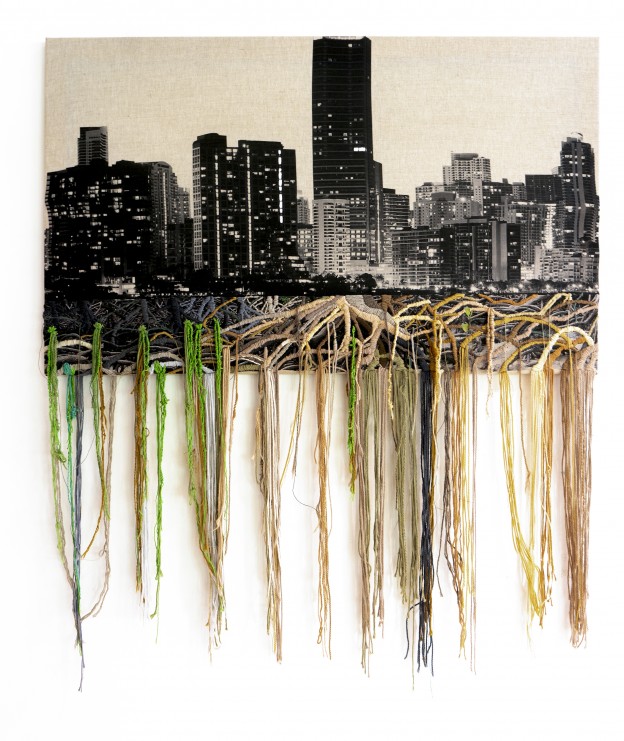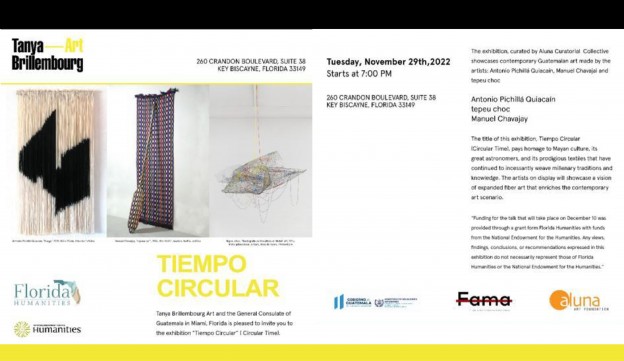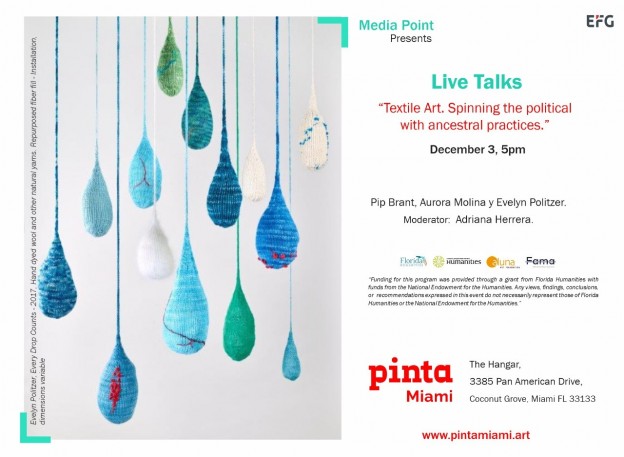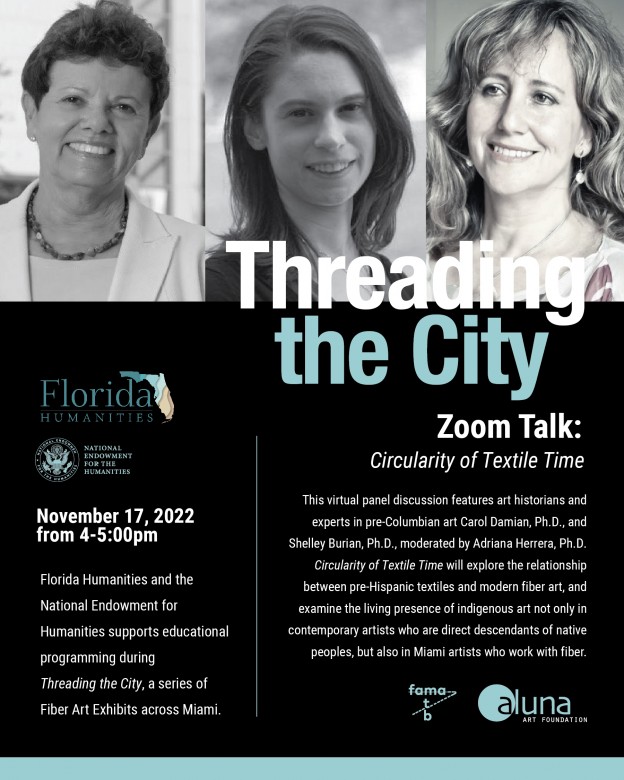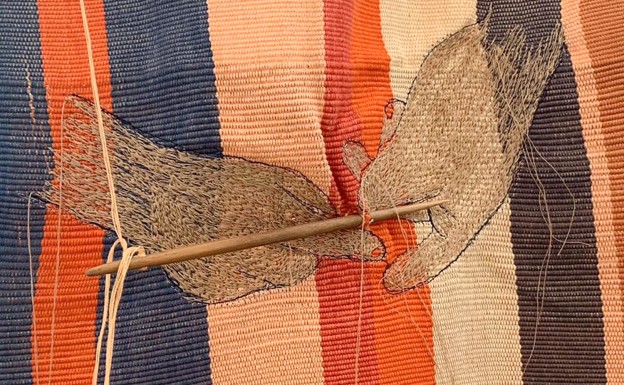Past Exhibition
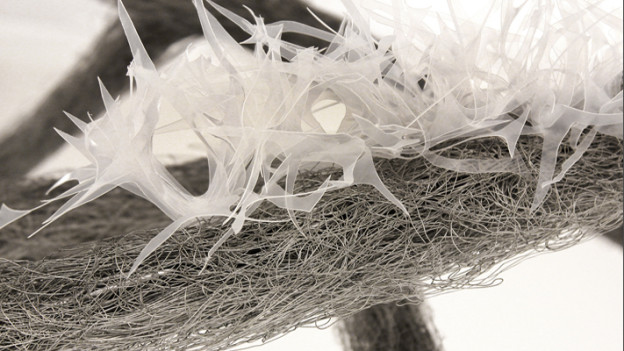
Lightness: Sculptures by César Rey
Sculptures by César Rey
Curated by Aluna Curatorial Collective
From March 9th to April 13th/2013 at Aluna Art Foundation | Mad Cow
Lightness
By Adriana Herrera Téllez
More than any other period, Postmodernism has brought pure fiction closer to the artistic aspiration to ways of creation capable of potentiating the boundless spaces of imagination. César Rey’s floating sculptures, made from waste materials which acquire a new aura in his installations, are autonomous forms, endowed with fluidity and lightness, and they possess the purity of that which is not tied to the references of reality.
In their genesis there are traces of the sea worlds he came to know as an adult. Having grown up in a cold city amid mountains, far away from the actual sea, that aquatic imaginary gave shape to a fantasy which he approached contemplating the movement of fish in their aquariums, in a manner somewhat reminiscent of the protagonist of Julio Cortázar’s famous short story, Axolotl, who transforms at some moment into the creature he observes, no longer from behind a glass wall, but from inside the water which now surrounds him. His mastery as a beholder of imaginary water worlds has led him to recreate them in such a way that they are increasingly light, luminescent, and weightless.
His early sculptures, in which he created a technique that accomplished a coral effect on ceramics, gave rise to referential forms which gradually gave way to the geometric, through different recreations of shells spirals, or to certain triangular figures created as thresholds. But the allusion to the ocean creatures and objects contains much more than a territorial reference. It somehow fulfills the role played by the subjective “Africa” in the case of the 20th century avant-garde movements: it does not refer to an existing “tópos”, a geographical place, but to human invention and its unceasing capacity to transform the real. We are in the presence of a created world that is fictitious, and at the same time, real in its own poetics.
On entering the passages inhabited by the floating creatures in his abstract installations, the viewer notices the predominance of silvery structures and opalescent whites, although there are also greens that vaguely evoke algae. We are faced with an amazing combination of found materials that function as “apparitions”. They are, in fact, not only common objects, but objects salvaged from the immense current of waste material which may be found in the contemporary world: plastics used to hold containers, wire, fragments of discarded objects which have apparently lost their value, but whose discovery is celebrated by the artist as a magical manifestation, insofar as it completes in a perfect way a piece under construction or reveals the potential form of a new work.
In any case, César Rey’s discovery of key fragments to assemble his sculptures contains a revelation which encompasses the process of construction of the work and which finally finds its course in the itinerary of the spectators moving amidst those monumental sculptures that seem to levitate, and filled with wonder at entering a unique floating, lightness world.
Español | Levedad: Esculturas de César Rey
Por Adriana Herrera
La posmodernidad ha acercado más que en ningún otro tiempo, la ficción pura a la aspiración artística de una creación capaz de potenciar los espacios sin límite de la imaginación. Las esculturas flotantes de César Rey, construidas con materiales de desecho que adquieren en sus instalaciones un aura nueva, son formas autónomas, dotadas de fluidez y levedad, y poseen esa pureza de lo que no está atado a las referencias de la realidad.
En su génesis hay rastros de los mundos marinos que sólo vino a conocer de adulto. Habiendo crecido en una ciudad fría entre montañas muy lejos del mar real, ese imaginario acuático conformó una fantasía a la que se acercaba contemplando el movimiento de los peces en sus acuarios, un poco al modo del protagonista del famoso cuento de Julio Cortázar, Axolotl, que en algún momento se transforma en la criatura que mira, ya no desde afuera del vidrio, sino desde adentro del agua que ahora le rodea. Su maestría de contemplador de mundos acuáticos imaginarios lo ha llevado a recrearlos de tal modo que son cada vez más leves, lumínicos, sin peso.
En sus primeras esculturas, cuando logró una técnica para imitar el coral en la cerámica, surgieron formas referenciales que poco a poco fueron dando paso a lo geométrico, a diversas recreaciones de la espiral del caracol, o a ciertas figuras triangulares. Pero la alusión a las criaturas y objetos oceánicos contiene mucho más que una referencia territorial. En cierto modo cumple el papel que tuvo el África subjetiva en las vanguardias del siglo XX: no refiere a un “topos” existente, a un lugar geográfico, sino a la invención humana y a su incesante capacidad de transformar lo real. Estamos frente a un mundo creado que es ficticio y, a un tiempo, cierto en su propia poética.
Al entrar en los pasajes habitados por las criaturas flotantes de sus instalaciones abstractas, se advierte el predominio de estructuras plateadas y blancos opalescentes, aunque también hay verdes que evocan vagamente algas. Estamos ante una sorprendente conjugación de materiales encontrados que funcionan como “apariciones”. Son, en efecto, objetos no sólo comunes sino rescatados de la inmensa corriente de desechos del mundo contemporáneo: plásticos usados para sostener envases, alambres, fragmentos de objetos descartados que aparentemente han perdido su valor, pero cuya aparición es celebrada por el artista como una manifestación mágica en tanto completa de forma perfecta una pieza en construcción o descubre la forma en potencia de una nueva obra.
En todo caso, el hallazgo de fragmentos clave para el ensamblaje de esculturas de César Rey contiene una revelación que se extiende al proceso de fabricación de la obra y que finalmente encuentra su curso en el recorrido de los espectadores que transitan entre esas inmensas esculturas que parecen levitar, con el asombro de entrar en un mundo flotante único.



